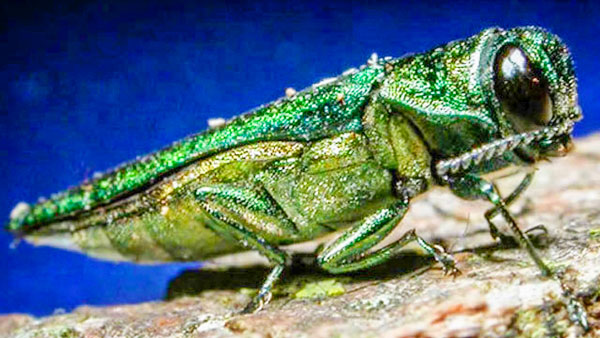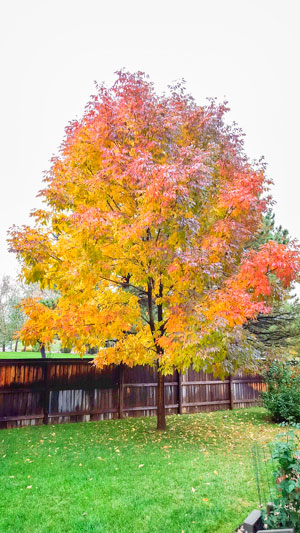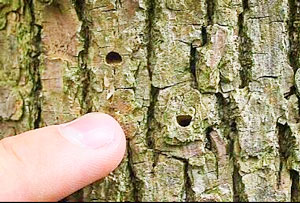Emerald Ash Borer an urban threat
By Carin Kirkegaard; courtesy photos

The Emerald Ash Borer is a native insect found in eastern Russia, northern China, Japan and Korea. It was brought to the U.S. with imported cargo and discovered in the forests of Michigan in 2002. The pest has no natural predators in the U.S.
Spring has sprung and Castle Pines gardeners are sprucing up home landscapes. The ash tree makes up 15% of Colorado’s urban forest and is in danger of being obliterated by the Emerald Ash Borer (EAB).
In August 2019, the first evidence of the EAB outside of a federally quarantined area was confirmed in Broomfield, Colorado. An adult EAB doesn’t fly far on its own, maybe 100 feet or perhaps a half mile with a favorable wind. Movement of the pests happens more often from infested ash wood products like firewood, packing material and live plant material from garden nurseries. While Broomfield may be more than 40 miles to the north, an EAB infestation is “as close as someone transporting wood,” said Master Gardener Leigh Houston.
Planted heavily throughout urban neighborhoods, ash trees were popular with home developers. The trees provide shade, grow quickly in Colorado’s dense dry soil and have beautiful fall foliage. The problem is, that was the only variety of tree that was planted as new neighborhoods went up. Houston said it’s not wise to plant any monoculture for the sheer fact that an entire tree population can be wiped out with one blight.

A healthy 12-year-old autumn purple ash tree just as its leaves are turning for fall. Homeowners see evidence of the Emerald Ash Borer when the crown of the tree starts to lose its leaves and thin.
Generally, there are four approaches for managing the pest: soil applications of insecticides, spraying insecticides onto the trunk, injecting insecticides into the trunk and applying persistent applications of insecticides onto the branches and trunk. The goal is to kill the adults as they lay eggs as well as kill newly-hatched larvae before they enter the bark.
Arborist and parks and open space manager for the Castle Pines North Metro District, Craig Miller, said that preventative chemical treatments for the EAB are not an effective or necessary expense until an infestation has been identified within 15 miles of a particular area. Right now, the Castle Pines community doesn’t fall within that radius.

The adult female Emerald Ash Borers lay several dozen eggs on the surface of an ash tree’s bark. The eggs hatch and larvae burrow into the bark feeding on the tissues of the tree just under the bark’s surface, eventually emerging from the bark and leaving a “D” shaped hole.
Through natural progression, eventually the EAB will arrive in Castle Pines. That could take several years, said Houston. She recommends homeowners with ash trees on their property determine the value of the tree and weigh that against the cost of treatment. Estimated costs for treatment are around $700. To be effective, they need to be applied twice a year.
Another option is to remove all ash trees from a home’s landscaping. If tree removal is the answer, there are many choices of trees that will grow well in the community’s climate. Miller recommends the swamp white oak tree as well as a Kentucky coffee tree for a moderate fast growing tree. Visit www.coloradotrees.org for a complete list.